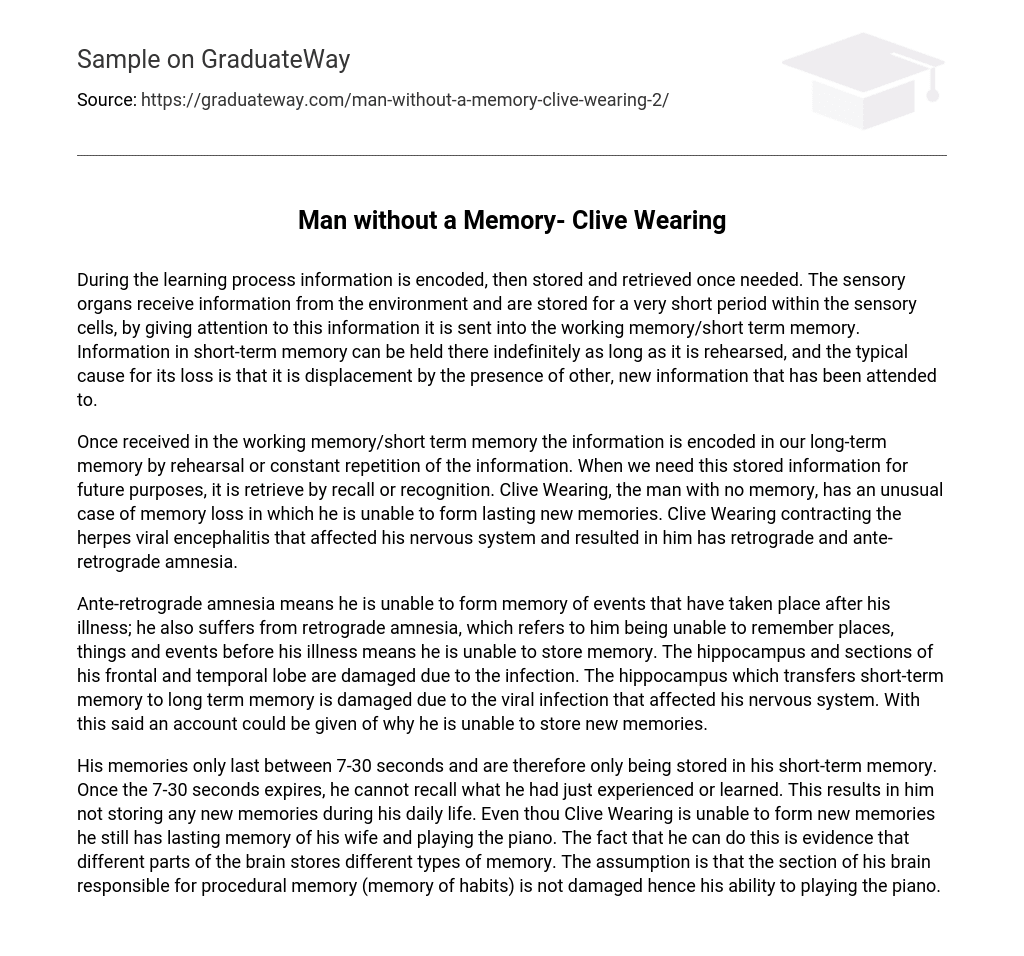During the learning process, information is encoded, stored, and retrieved. Initially, the sensory organs receive information from the environment and briefly store it in the sensory cells. By paying attention to this information, it gets transferred to the working memory/short-term memory. If rehearsed, information can stay in short-term memory indefinitely but often gets displaced by newly attended information.
After receiving information in our working memory/short-term memory, it is encoded in our long-term memory through rehearsal or constant repetition. When we later need to access this stored information, we can retrieve it either through recall or recognition. A person named Clive Wearing has a unique case of memory loss due to contracting herpes viral encephalitis. This condition affected his nervous system and resulted in both retrograde and ante-retrograde amnesia.
The individual is suffering from both ante-retrograde amnesia and retrograde amnesia due to their illness. Ante-retrograde amnesia causes an inability to form memories of events after the illness, while retrograde amnesia results in difficulty recalling things before the illness. These memory impairments are caused by damage in the hippocampus as well as sections of the frontal and temporal lobes affected by the viral infection. The viral infection impacted the individual’s nervous system and damaged the hippocampus, which is responsible for transferring short-term memory into long-term memory. Therefore, this neurological condition explains why there is a problem with memory formation.
Clive Wearing’s memories are only stored in his short-term memory and last between 7-30 seconds. Once this time passes, he cannot remember what he just experienced or learned, resulting in a lack of new memories. However, he is able to remember his wife and playing the piano, suggesting that different parts of the brain store different types of memory. It is assumed that the section responsible for procedural memory is intact, allowing him to still play the piano.





